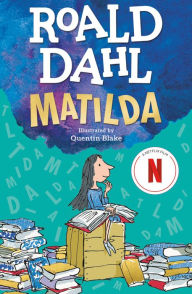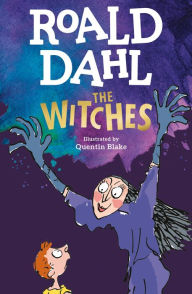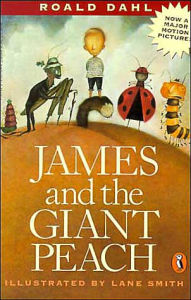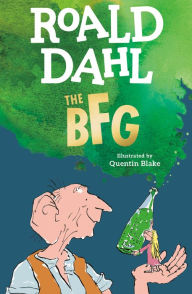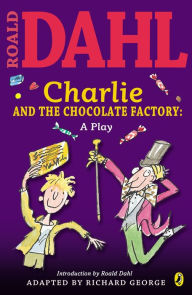5 Disturbing Details from the Books of Roald Dahl (That You Probably Don’t Remember)
Roald Dahl knew how to capture the imaginations of children, and he always respected them as readers. His books often take extreme plot twists, conveying how dramatic ordinary events can appear to a kid, and how capricious, mysterious, and unfair adults can seem. In painting with broad strokes, Dahl makes life feel true to kids, who have little control over their days. Plus, Dahl always follows Matilda’s rule for writing for children: books for kids should always have plenty of “funny bits.” Sometimes Dahl’s funny bits are a little disturbing, which is part of what makes him such a distinctive and beloved writer. Here are five brilliant, disturbing details from Dahl’s books that you may not recall.
Matilda
Matilda
By
Roald Dahl
Illustrator
Quentin Blake
In Stock Online
Paperback $8.99
Little box of horrors: The Chokey in Matilda
Like all memorable sadists, the Trunchbull, the massive headmistress at Matilda’s school, is creative in her punishments. When a child’s long braids displease her, she uses them to hurl her across the schoolyard. When a boy is caught stealing cake, the Trunchbull makes him eat an entire cake in front of his assembled classmates. But the Trunchbull’s most twisted torture device has to be the Chokey.
As fellow student Hortensia tells Matilda, “The Chokey…is a very tall but narrow cupboard. The floor is only ten inches square so you can’t sit down or squat in it. You have to stand. And three of the walls are made of cement with bits of broken glass sticking out all over, so you can’t lean against them. You have to stand more or less at attention all the time when you get locked up in there.” And you can’t lean on the door, either, because it has got “thousands of sharp spikey nails sticking out of it.”
Little box of horrors: The Chokey in Matilda
Like all memorable sadists, the Trunchbull, the massive headmistress at Matilda’s school, is creative in her punishments. When a child’s long braids displease her, she uses them to hurl her across the schoolyard. When a boy is caught stealing cake, the Trunchbull makes him eat an entire cake in front of his assembled classmates. But the Trunchbull’s most twisted torture device has to be the Chokey.
As fellow student Hortensia tells Matilda, “The Chokey…is a very tall but narrow cupboard. The floor is only ten inches square so you can’t sit down or squat in it. You have to stand. And three of the walls are made of cement with bits of broken glass sticking out all over, so you can’t lean against them. You have to stand more or less at attention all the time when you get locked up in there.” And you can’t lean on the door, either, because it has got “thousands of sharp spikey nails sticking out of it.”
The Witches
The Witches
By
Roald Dahl
Illustrator
Quentin Blake
In Stock Online
Paperback $8.99
Once you’re a mouse, there’s no turning back in The Witches
When The Witches‘ seven-year-old, unnamed narrator’s parents are killed, he goes to live with his grandmother. They form an especially close bond, and she teaches him all about spotting witches, her pet obsession. Then they book a trip at a resort that turns out to be hosting a convention of covert witches, who turn the narrator into a mouse. His small stature comes in handy for defeating them, but there is one drawback: he remains a mouse.
Most children’s book writers would probably choose to have the spell wear off or to figure a way out of it, but Roald Dahl commits to his magic. The narrator cannot be turned back into a boy, which means he’ll have a mouse-sized lifespan. “A mouse-person will almost certainly live for three times as long as an ordinary mouse,” Grandmamma tells him. “About nine years.” But the boy rejoices in the news, figuring then he and his grandmother will die at about the same time, and he’ll never be alone. Has there ever been a stranger or more beautiful metaphor for the depths of the love a child can feel for his guardian?
Once you’re a mouse, there’s no turning back in The Witches
When The Witches‘ seven-year-old, unnamed narrator’s parents are killed, he goes to live with his grandmother. They form an especially close bond, and she teaches him all about spotting witches, her pet obsession. Then they book a trip at a resort that turns out to be hosting a convention of covert witches, who turn the narrator into a mouse. His small stature comes in handy for defeating them, but there is one drawback: he remains a mouse.
Most children’s book writers would probably choose to have the spell wear off or to figure a way out of it, but Roald Dahl commits to his magic. The narrator cannot be turned back into a boy, which means he’ll have a mouse-sized lifespan. “A mouse-person will almost certainly live for three times as long as an ordinary mouse,” Grandmamma tells him. “About nine years.” But the boy rejoices in the news, figuring then he and his grandmother will die at about the same time, and he’ll never be alone. Has there ever been a stranger or more beautiful metaphor for the depths of the love a child can feel for his guardian?
James and the Giant Peach
James and the Giant Peach
By
Roald Dahl
Illustrator
Lane Smith
In Stock Online
Paperback $8.99
Rampant drug use among animals in James and the Giant Peach
Believe it or not, the charming classic James and the Giant Peach is frequently banned. Is itchallenged because James’ adoring parents are eaten by an escaped zoo rhinoceros? Or because his horrid aunts get squashed flat by a peach? Nope, it’s mostly challenged for its drug and alcohol references, as in this rhyme that a Centipede sings to James: “Once upon a time/When pigs were swine/And monkeys chewed tobacco/And hens took snuff/To make themselves tough/And the ducks said quack-quack-quacko/And porcupines/Drank fiery wines.”
Rampant drug use among animals in James and the Giant Peach
Believe it or not, the charming classic James and the Giant Peach is frequently banned. Is itchallenged because James’ adoring parents are eaten by an escaped zoo rhinoceros? Or because his horrid aunts get squashed flat by a peach? Nope, it’s mostly challenged for its drug and alcohol references, as in this rhyme that a Centipede sings to James: “Once upon a time/When pigs were swine/And monkeys chewed tobacco/And hens took snuff/To make themselves tough/And the ducks said quack-quack-quacko/And porcupines/Drank fiery wines.”
The BFG
The BFG
By
Roald Dahl
Illustrator
Quentin Blake
In Stock Online
Paperback $8.99
Giants: They’re made out of people in The BFG
In The BFG, the title character kidnaps Sophie and takes her to Giant Country, where kids are on the menu. “We is having an interesting babblement about the taste of the human bean. The human bean is not a vegetable,” one giant says. Even though the plot of the book involves ridding the world of people-eating giants, The BFG frequently lands on banned lists for its depiction of cannibalism.
Giants: They’re made out of people in The BFG
In The BFG, the title character kidnaps Sophie and takes her to Giant Country, where kids are on the menu. “We is having an interesting babblement about the taste of the human bean. The human bean is not a vegetable,” one giant says. Even though the plot of the book involves ridding the world of people-eating giants, The BFG frequently lands on banned lists for its depiction of cannibalism.
Charlie and the Chocolate Factory: A Play
Charlie and the Chocolate Factory: A Play
By Roald Dahl
In Stock Online
Paperback $6.99
Get the kid to the juicer in Charlie and the Chocolate Factory
Willie Wonka could swap stories with the Trunchbull about creative punishments for kids. So why does he endear while the Trunchbull horrifies? He’s much more debonair, his punishments are always just, and the children inflict them on themselves when they disobey. My favorite punishment is that of Violet Beauregarde, who clamors after some blueberry gum in such a spoiled manner that when she gets it, she turns blue and inflates into a blueberry. Wonka instructs the Oompah-Loompahs to roll her the Juicing Room. “We’ve got to squeeze the juice out of her immediately,” he explains. “After that, we’ll just have to see how she comes out.”
Get the kid to the juicer in Charlie and the Chocolate Factory
Willie Wonka could swap stories with the Trunchbull about creative punishments for kids. So why does he endear while the Trunchbull horrifies? He’s much more debonair, his punishments are always just, and the children inflict them on themselves when they disobey. My favorite punishment is that of Violet Beauregarde, who clamors after some blueberry gum in such a spoiled manner that when she gets it, she turns blue and inflates into a blueberry. Wonka instructs the Oompah-Loompahs to roll her the Juicing Room. “We’ve got to squeeze the juice out of her immediately,” he explains. “After that, we’ll just have to see how she comes out.”
